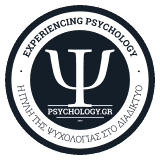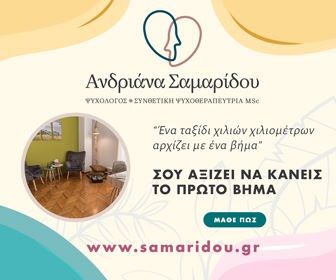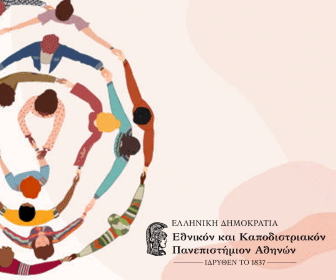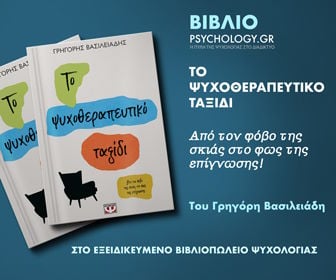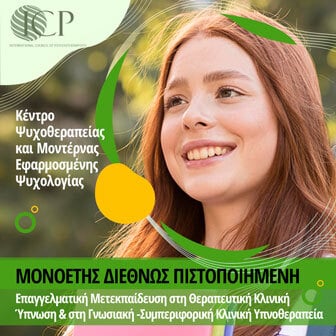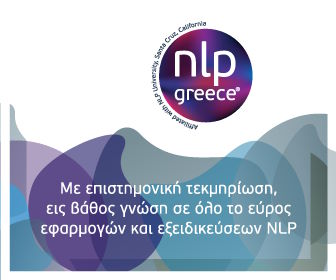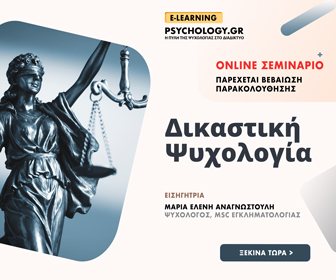The client - centered and Psychoanalytic models of psychotherapy and counseling are both offsprings of great figures in the field of psychological treatment namely, Carl Ransom Rogers and Sigmund Freud respectively, were the originators of these fundamental approaches, which proved to be very important for the further development of counseling and psychotherapy.
While Freud based his theoretical framework on his medical background (psychiatry), Rogers, influenced by the existential philosophy, developed a psychological theory, in which the person has a central role to play.
The differences concerning the origins of the above approaches are obviously reflected to both their theory and practice. An apparently different conceptualization of human nature's needs and goals by Rogers and Freud allowed them to adopt different techniques for helping the individual to lead a creative and rewarding life.
In this paper the major theoretical concepts and the basic tools of intervention used in the above mentioned therapeutic approaches will be discussed. This discussion is on attempt to illustrate any similarities of Rogerian and Freudian modules of psychotherapy. Issues, such as the role of the counselor/psychotherapist, the nature of the therapeutic relationship, the use of specific techniques and the evaluation of the therapeutic outcome, as perceived by the client - centered and the psychoanalytic approach, will be addressed. However, the advantages and limitations associated with each approach will be briefly presented, since a full account on their theoretical and practical developments would seem to exceed the scope of this paper.
THEORY
Rogerian approach is the most widely used humanistic approach in the field of counseling and psychotherapy. Since it shares the principals of the humanistic tradition, it puts emphasis on experiential processes, rather than on the etiology of the clients problems in this early childhood relationships with his parents, as psychoanalysis does. Rogerian mode of therapy is also known as non directive or client - centered or person - centered approach. It is called so, because the role of the expert is transferred from the therapist to the client, who is regarded as responsible for and capable of reaching his own solutions for his own problems (McLead, 1993; Nelson-Jones, 1982).
Concepts such as organizing valuing process, conditions of worth, congruence, self-actualization and self-concept are of central value and all interrelated in the Rogerian model of counseling and psychotherapy. While self is the real, underlying, experiencing part of the person, self-concept is the individual?s perception of himself. Self-actualization is the inherent tendency to every human being to use his own full potential and reach the optimal level of his self-growth. When self-concept is in congruence with the individual?s own, internal valuing process of his experiences (organismic valuing process), there is no obstacle in the function of his actualizing tendency. Only the conditional parental love (conditions of worth) in childhood may lead the person to experience incongruence as an adult. Such a state of denial or repression of thoughts and feelings may result in the individual?s need for counseling or therapy (McLead, 1993; Davis & Fallowfield, 1991).
To Rogers, the goal of counseling and therapy is the congruence of personality. That is achieved when the self has access to the variety of the experiences of the organism (Kahn, 1985). The need for congruence can not be fulfilled, until two primary human needs have been satisfied. These are the self-actualizing tendency and the need for being loved and positively valued by others. From a person-centered perspective, these needs can only be met when the counselor creates on atmosphere of unconditional positive regard and empathic understanding. Only then will the person be able to make use of his full potential, and all the qualities in him, which are not yet developed, will now be developed. In other words, by means of this accepting climate, the person will become a full functioning organisme, always in the process of becoming (McLead, 1993; Rogers, 1961).
On the other hand, Psychoanalytic theory stresses the importance of unconscious procedures and sexuality as the key terms for a deep understanding of human psychopathology. To Frend, there are three psychic levels or components of the metal apratus: conscious, preconscious and uncounscious that later ( in 1923) developed into ego, superego, and id. As Frend (1900) pointed out in ?the interpretation of dreams?, dreams are the best way to explore the uncounscious, since they are viewed as a disquised fulfilment of the id wishes, repressed by the ego, in order to escape from awareness (Brown & Pedder, 1991).
Ζητήματα Ηθικής και Δεοντολογίας στην Άσκηση της Ψυχοθεραπείας
Κύκλος Σεμιναρίων για Επαγγελματίες Ψυχικής Υγείας | Γενική είσοδος: 35 ευρώ
Θεματικές Ενότητες: Διπλές σχέσεις θεραπευτή – θεραπευόμενου | Ψυχική ανθεκτικότητα του θεραπευτή | Υπέρβαση – παραβίαση ορίων στην ψυχοθεραπευτική σχέση | Ειδικές προκλήσεις στην ψυχοθεραπεία | Ζητήματα ηθικής και δεοντολογίας | Διαχείριση εξω-θεραπευτικών πληροφοριών | Διατήρηση και άρση του απορρήτου
Moreover, the impact of the significant others (mainly mother and father) is regarded as very important to the later functioning of the ego. Specifically, the classical psychoanalytic theory suggested a model of psychosocial development (Frend, 1905). In this context, adult sexuality is viewed as the outcome of a libidinal drive, present from birth and developing through a number of stages, pleasue being derived from different erotogenic zones at each stage (Brown & Pedder, 1991, p.38). The different psychological discovers, e.g. neurotic disorders, are thought to stew from the child?s problematic relationships with his parents, relationships which are associated with a specific stage of his development and led to an unresolved sexual conflict (Frend, 1894).
Furthermore, concepts such as instics, psychic pain and defence mechanisms seem to be crucial in order for the psychoanalytic approach to be fully understood. As Rycroft (1972) stated, instic is the inherent drive to take action, which is biologically determined. To Joffe and Sandler (1965), a central concept in psychoanalytic theory is the concept of the psychic pain. That results from the realization of the discrepancy between the person?s ideal self and his actual self. One way of coping with anxiety or psychic pain or conflict is the use of defense mechanisms (e.g. regression, repression, displacement, reaction formation, projection etc.) (Brown & Pedder, 1991). That is the way the ego protects the individual from painful thoughts and feelings by keeping them from awareness.
Margulies ( 1984) claims that when two clinical theories are compared the essense of crucial differences between them may be last in an attempt to find the similarieties. However, in the case of the above theories, it seems that the discrepancies are hard not to be seen, since they outnumber the resemblances.
As stated above, Frend was engaged in understanding psychopathology, by means of the medical model of illness. He focused on external explanations of psychological problems, viewing the human being as incapable of determining his destiny. In other words, to psychoanalytic thinking, human thoughts and behaviour are overdetermined by uncounscious processes, which are uncontrolable, since they are out of reach of the awareness (Nelson-Jones, 1982).
In contrast, to Rogerian theory, the human being is viewed as trustworthy, creative and capable of actualizing his full potential when an accepting environment is provided. Client-centred approach explains :incongruence: (instead of pathology), staying in the person?s frame of reference. Human tendency for self-growth is entrusted, while the individual is seem as always in a process of becoming and as ever-changing and as improving his self-concept (Davis & Eallowfield, 1991; Kirschenbann & Henderson, 1990). Therefore the person-centred perspective of the human being is more optimistic than the psychoanalytic one.
Τι να ΜΗΝ περιμένω από την ψυχοθεραπεία μου;
3ωρο Online βιωματικό εργαστήριο του PSYCHOLOGY.GR
Θεματικές Ενότητες: Τι είναι για μένα η ψυχοθεραπεία, τι περιμένω από αυτήν τη διαδικασία; | Τι περιμένω από τον ψυχοθεραπευτή μου;
| Ποια είναι τα όριά της ψυχοθεραπείας; | Πώς αντιλαμβάνομαι αν με ωφελεί ή αν τη χρησιμοποιώ ως άλλοθι για να μένω στην ουσία στάσιμος;
Besides, to Rogers, the self-actualizing tendency is the main force which notivates the person to take action. Instead, to the psychoanalytic approach, insticts and dynamics taking place within the psyche (id,ego,superego) account for the individual's motivation to act. The weakness of terms, such as insticts, id, ego and superego, is that they refer to the physche's activity taking place within itself and as a result, they seem to underestimate the importance of relationships between people (interpersonal relationships), (Jacobs, 1988).
On the other hand, the Rogerian concepts of Self and Self-concept seem to be clearer and more applicable to counselling than the abstract and obscure Frendian concepts of id, ego and superego, which are not easily defined and, consequently, can not be subject to testification (Kahn, 1985).
Nevertheless, some similarities can also be drawn from a comparison between the above theoritical models. To both of them the ultimate psychotherapeutic goals is the widening of counsciousness but this is expressed and attempted by different means. On one hand, the aim of psychoanalysis is to make the uncounscious conscious, and , by doing so, to help the person gain control over his thoughts and feelings (Jacobs, 1988). On the other hand, the client-centred approach aims at helping the individual to overcome the state of incongruence, while the former pursues its objective by attempting to uncover the repressed childhood experiences, the latter focuses on working through counsciousness, on the experiencing of the ?here and now? relationships (Kahn, 1985, McLead, 1993).
It is also noteworthy that Kahn (1985) compares the term of incongruence with the psychoanalystic defence mechanism of repression. To him, both of them seem to be different versions of the same thing. That is, because both prevent the person form being aware of his own feelings. The only difference is that, the state of the incongruence, to Rogers? approach, can be removed by means of the three ?core conditions?, whereas lifting of repression can be achieved through the psychoanalytic technique of interpretation.
PRACTICE
Some of the major implications in practising both of the above theories are now going to be addressed. Issues, such as techniques, the nature of the therapeutic relationships, and their contribution to the therapeutic outcome are going to be discussed.
According to the client-centred approach, the existence of three conditions is sufficient for the individual to be able to make use of his own resources for self-understanding and to become a fully functioning person (McLead, 1993). These therapeutic conditions may be applied to every creative and growth-promoting human relationship, such the ones between counsellor and client, teacher and student or parent and child (Rogers, 1961; Kirchenbaum & Henderson, 1990). These are the following:
1. Congruence on the part of the therapist: the therapist is genuine and expresses his/her real feelings for the client.
2. Unconditional positive regard: that implies a nonpossessive, acepting towards the client whatever he/she is.
3. Empathic understanding: it is the therapist?s capacity to experience the emotional contents of the messages communicated by the client and to feed this understanding back to the client. As Kahn (1985) pointed out, a face - to - face counsellor-client interaction facilitates the communication of emphathy (Davis & Fallowfield =, 1991; Nelson-Jones, 1982).
While, to Rogerian approach, the quality is what contributes to the therapeutic outcome, psychoanalysis put particular emphasis on the use of specific therapeutic techniques. These techniques include:
1.The free association technique: it helps the patient to gradually put his conflict into words.
2.Interpretation of the patient?s dreams and defences against his painful and unthoughtful feelings and insights. The interpretation should be communicated clearly and only when the patient is ready to accpet it.
3.Transference: the patient?s feelings projected to the therapist without having been caused by him.
4.The neutrality and non-expressiveness on the part of the counselor facilitate the process of transference (McLead, 1993).
As stated above, the client-centred therapeutic conditions are applicable to different helping relationships and the most crucial qualification which the helper should possess is his own congruence. Instead, psychoanalytic approach requires the use of specific techniques and isists on the therapist?s long training and personal analysis. In this way the countertransference phenomena are minimized (Rogers, 1980). Therefore, it can only apply to the therapist-patient relationship.
In addition, as Kahn ( 1985) puts it, the unconditional positive regard and empathic understanding used by the Rogerian couselor are contrasted with the psychoanalytic use of transference. That is because the characteristics of neutrality and emotional detachement, required by a psychoanalytic therapist, in order for the transference feelings to be activated, are incompatible with the Rogerian emotional expression, warmth and acceptance do not interprete the unconscious processes (Brown & Pedder, 1991). On the other hand, Rogers (1951) disregards the use of interpretation by psychoanalysis since, to his opinion, it develops strong resistance on the part of the client and, consequently, delays the therapeutic process. As he pointed out, the fact that psychoanalytic approach does not present any data to demonstrate the efficacy of the use of interpretation, the utility of this technique should be seen with great scepticism. To Rogers, only ?non directiveness?, if combined with the three therapeutic conditions, enables the client?s self-exploration and self-actualization.
CRITICSM
Pyschoanalytic and client-centred approaches have been both critisized for the existance of several inadequacies concerning their theory and practice.
In terms of psychoanalysis, theory holds in the preconscious of the analyst. As a result, all the theoritical concepts are re-defined and reinterpreted through the analyst?s subjective experience, before they are transformed into clinical practice (Parsons, 1992). This implies that the way in which the psychoanalytic practice is informed by psychoanalytic theory seems not to be scientifiqually reliable and valid.
In this respect, it should be stressed that the validity of the psychoanalytic theory as a whole is doubted. That is because concepts such as subconscious, unconscious and insticts are not empirically defined and consequently, they way not be subject to falsification (Davison & neale, 1986). On the other handit seems that Rogers has always relied on empirical evidence, in order to confirm or disconfirm his theoritical assumptions.
While the main criticsm against the psychoanalytic approach could focus on the internal consistency of the theory as a whole, client-centred approach has been doubted in respect to other aspects.
Since it is widely accepted that individuals differ in the way the perceive and construe the same experiences, it could be assumed that the ?core conditions? of person-centred therapy have different impact on different persons. However the investigation of the individual differences and of their relation to the therapeutic outcome has been largerly ignored by research studies exploring the client-centred practice (McLead, 1993). Besides, the fact that the therapeutic conditions suggested by Rogers are actually necessary and sufficient for a favourable change to occur, has been doubted, as well.
In addition, as mentioned above, Rogerian theory is not concerned with the developmenal understanding of human psychopathology, as psychoanalysis is. Instead, client-centred approach focuses on the ?here and now? dimension of individual experience, which is a much less time-consuming process then working through transference. That means Rogerian therapy does not have to be as lengthy as the psychoanalytic one. It has consequences in terms of socioeconomic status of the clients attracted to each appraoch. In other words, more educated individuals, able to afford the high cost of a long-term therapy are attracted to psychoanalysis, while a wider variety of clients seem to be suitable to client-centred counselling.
In conclusion, it could be said that both of the above mentioned appraoches intend to help the individual to rech an adequate self-understanding, eventhough based on contrasting theoritical assumptions and following different techniques. However, it is noteworthy that both psychoanalytic and client-centred appraoches encourage the individual to see his private world through his own eyes, by stressing the importance of empathic listening to the client?s words and feelings, and the acceptance of the individuality and the uniqueness of the person. Lastly, the contribution of patient?s own personality, and particularly client?s motivation for change and learning are equally recognised by both approaches, as the essential components of effective psychotherapy.
REFRENCES
1. McLead J. (1993) - An introduction to counselling
Open University Press; Buchingham
2. Nelson - Jones, R (1982) - The theory and practice of Counselling Psychology
Cassell; London
3. Davis H. & Fallowfield, L. (1991) - Counselling and communication in Health care
Wiley; Chichester
4. Kahn, E. (1985) - Heinz Kohut and arl Rogers: A Timely Comparision
American Psychologist, August 42, (8), 893-904.
5. Rogers, C.R. (1961) - A therapist's view of Psychotherapy: On becoming a person
Constable; London
6. Frend, S. (1900) - The Interpretation of dreams? Standard Edition of the complete Phychological works of Sigmund Frend, Vols 4 and 5 London: Hogarth Press and the Institute of Psychoanalysis. In Brown & Pedder (1991) op.cit.
7. Brown, D & Pedder, J. (1991) - Introduction to Psychotherapy: An outline of psychodynamic principles and practice, (2nd ed.)
Routledge; London.
8. Frend, S. (1905) - Three Essays on the Theory of Sexuality, Standard Edition, vol.7.
In Brown & Pedder (1991) op.cit.
9. Frend, S. (1894) - The Neuro - Psychases of Defence (I). Standard Edition, vol. 3
In Brown & Pedder ( 1991) op.cit.
10. Rycroft, C. (1972) - A Critical Dictionary of Psychoanalysis, Harmondsorth: Penguin Books.
In Brown & Pedder (1991) op.cit.
11. Joffe, W.G. and Sandler, J. (1965) - Notes on pain, depression and individuation.
The Psychoanalytic Study of the Child - 20: 394-424. In Brown & Pedder (1991) op.cit.
12. Margulies, A. (1984) - Toward empathy: The uses of wonder. American Journal of Psychiatry, 141 ,1025-1033
In Emery ( 1987) op.cit.
13. Kirschenbanm, H. & Henderson, V (eds) (1990) - A Client-centered / Person-centred
Approach to Therapy - The Carl Rogers Reader, Constable; London
14. Jacobs, M. (1988) - Psychodynamic Counselling in action. Sage Publications; London
15. Rogers, C.R. ( 1980) - A way of being
Boston : Houghton Mifflin. In Kahn (1985) op.cit.
16. Rayner, E. (1992) - Matching Attunment and the psychoanalytic dialogue
The International Journal of Psychoanalysis, 73, 39-54.
17. Casewent, P. (1985) - On learning from the Patient. Tavistock / Routledge Publications; London
18. Emery, E. (1987) - Empathy: Psychoanalytic and Client-centred
American Psychologist May, 513-515
19. Rogers, C.R. (1951) - Client-centred therapy.
Boston: Houghton Mifflin.
20. Parsons, M. (1951) - The Refinding of theory in Clinical Practice
The International Journal of Psychoanalysis, 73, 103-115.
21 Davison, G.C. & Neale, J.M. (1986) - Abnormal Psychology (fourth edition).
Wiley; USA.
Συγγραφή - Επιμέλεια Άρθρου
Γρηγόρης Βασιλειάδης - Ψυχολόγος
Γρηγόρης Βασιλειάδης: έχει επιβεβαιωθεί από το Psychology
Οι πληροφορίες που αναφέρονται στον επαγγελματικό κατάλογο ειδικών παρέχονται από τους ίδιους τους ειδικούς, κατά την εγγραφή τους στο σύστημα. Όταν βλέπετε την ένδειξη «έχει επιβεβαιωθεί από το Psychology”, σημαίνει ότι το Psychology έχει ελέγξει, με email, τηλεφωνικά ή/και με λήψη των σχετικών εγγράφων, τα ακόλουθα στοιχεία:
- Ότι ο ειδικός είναι υπαρκτό πρόσωπο.
- Ότι τα πτυχία οι τίτλοι και οι εξειδικεύσεις που αναφέρει είναι αληθινά.
- Ότι οι πληροφορίες που αναφέρει ισχύουν.

Συστημική και Υπαρξιακή Ψυχοθεραπεία. Συγγραφέας των Best Sellers: Το Ψυχοθεραπευτικό Ταξίδι, Για μια ζωή με νόημα, Εξομολογήσεις ενός ψυχοθεραπευτή, Πόσο αντέχεις την αλήθεια






